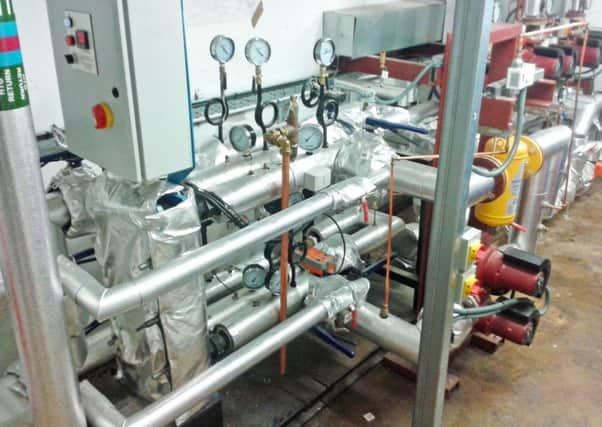Climate change: Gas is on the way out. Here’s how we can still heat our homes – Andy Yuill


Earlier this year, following advice from the Committee on Climate Change, the government announced plans that will see no new homes connected to the gas grid. The committee called on the government to get serious about tackling emissions from homes, and the announcement led to a spate of headlines claiming “no new gas boilers by 2025”.
To clarify, it’s not just “no new gas boilers”, it’s the complete abolition of fossil fuel heating in new-build homes. This means no more LPG, oil or natural gas heating in new houses.
Advertisement
Hide AdAdvertisement
Hide AdThis plan is essential if we are to remove the immediate health impacts resulting from poor air quality associated with burning fuels for heating, and the changes needed if we are to mitigate the climate emergency.
So, what are the options?
As an engineer, I have been working in the renewable heat sector for close to a decade. I have first-hand experience of what this means for the homeowner, the wider industry context and what technical solutions may come to the fore.
The objective for all new- builds must be to lower energy demand in the first place. This means more insulation and better building standards.
A new building with efficient construction is an ideal match for electric heat pumps, which extract large amounts of lower temperature heat from the air or the ground and convert it into useful heat for our houses. For every unit of electricity used in a heat pump, you can achieve two to four units of useful heating.
As coal power stations close, and we continue to build more wind, solar and hydro power stations, it’s important to note that electricity, especially in Scotland, is now very low carbon.
However, creating more efficient buildings with efficient heat pumps may place greater costs onto house builders. We will need stronger building regulations to ensure the costs are not offloaded to the buyer, or they will simply be perceived as making new-builds a more expensive option.
As builders search for ways to save on costs, they will look for an alternative to heat pumps, so we are also likely to see more direct electric heating. Direct electric radiators will undoubtedly be used in new buildings. This will put additional running costs onto the homeowner, and necessitate upgrades for our electricity grid.
Another answer is in district heating. A central source of low carbon heat, such as a large heat pump, is used to supply houses with heat through a network of buried pipes, and will become a preferred option for dense new build housing in our towns and cities, especially where there is an existing heat network or the houses are part of a new development with schools, leisure facilities or shops.
Advertisement
Hide AdAdvertisement
Hide AdThe new buildings should be low-energy, efficient houses and these low-energy demands can prove to be challenging for district heating unless there are other large demands nearby to justify the costs of installing a heat network.
Further down the list of preferred low carbon heating options, we will see biomass heating from wood pellets or chips in rural properties. Experience tells us this is costly to install, maintain and operate on an individual house basis. We will also see bio-fuels or bio-gas replacing oil and LPG. These are likely to be niche solutions due to limitations on producing these fuels and their alternative, more important, role in transport and chemical production.
For me, hydrogen simply isn’t an option in this debate. It is not low carbon, despite what some would have us believe. It would lock us into a future where we continue to suffer poor air quality from burning fuel in our homes, and the engineering behind producing it on the scale we need is neither low carbon or low cost.
Ensuring our new houses are low energy, and the energy used is low carbon, is essential. It is common sense for the environment and for the people who will live in the houses.
We also need to address the type of energy used in our existing houses. It would take 125 years to replace all of our current housing stock with new, low carbon buildings.
An urgent plan to replace fossil fuelled heating across all houses, not just the new ones, is needed. If this happens then we will see an increase in retrofitted efficiency – insulation and more insulation – heat pumps and district heating. This is where a real impact can be made.
Andy Yuill is senior engineer at Natural Power
